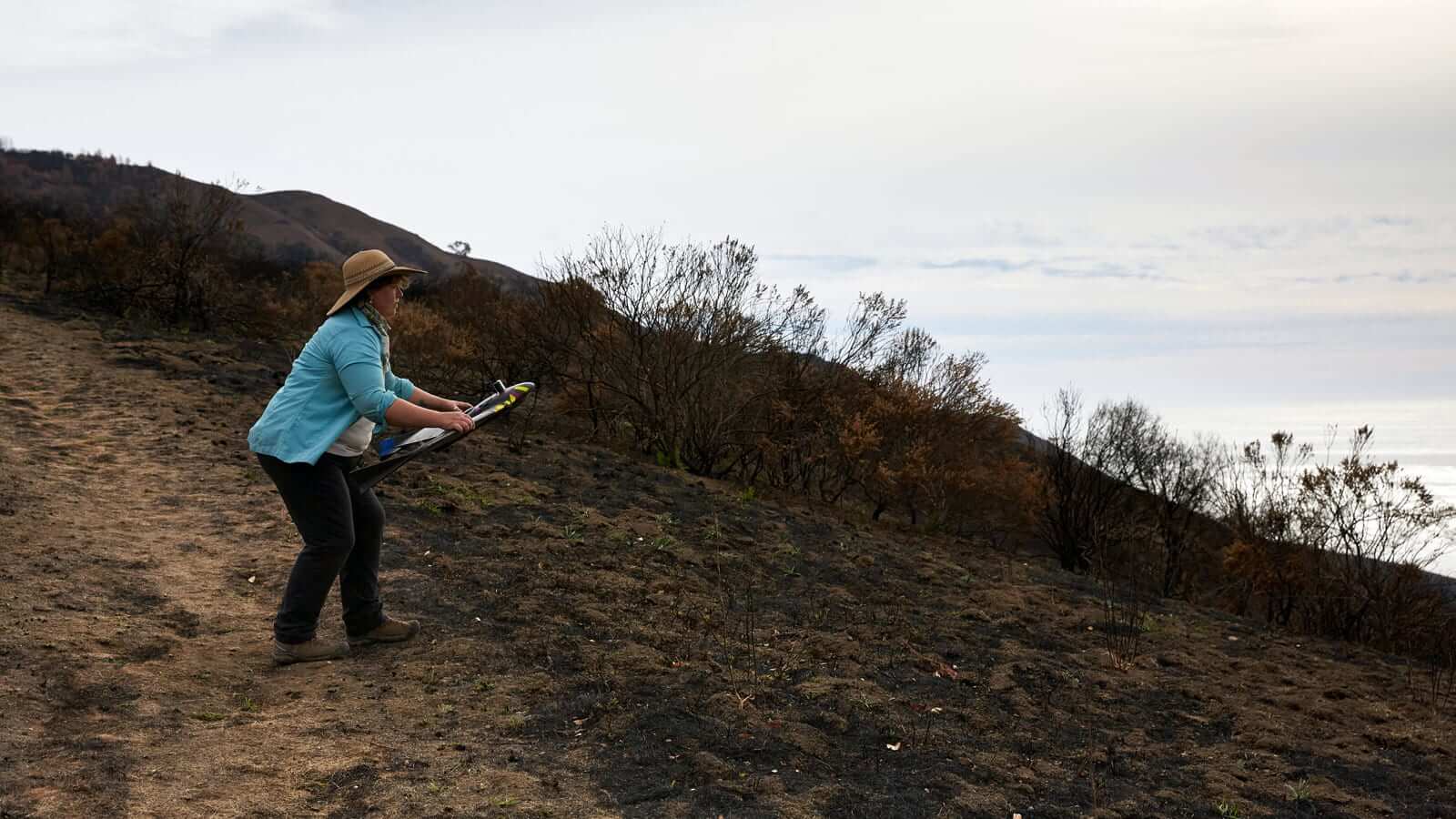The UCSC CITRIS Initiative for Drone Education and Research (CIDER) is a new program offered by the University of Santa Cruz. The initiative, which features two eBee X fixed-wing drones among other systems, pairs undergraduate education with drone training to offer students real-world experiences, FAA licensure, and career-enhancing learning opportunities that are shaping the next generation of skilled pilots.
Table of contents
| 1. Research support, industry impact | 2. Surveying wildlife destruction with eBee X |
| 3. Real-world ground school | 4. Drone Camp |

What happens when you bring together drone training and innovative research support through a leading university? New career paths and discoveries become viable and bright futures begin to take hold.
The University of California Santa Cruz (UCSC) is doing just this and in September 2021 launched CITRIS Initiative for Drone Education and Research (CIDER). The first-of-its-kind initiative for California is a multi-campus program that blends not just educational resources, but also research opportunities and real-world experiences which allow students to integrate drone technology such as eBee X across all academic disciplines and many industry sectors.
The result is developing a diverse drone workforce.
“Our ultimate goal is to create a minor in drones that can then articulate with any of the majors from art and anthropology to engineering and many others,” comments Becca Fenwick, Ph.D. and CITRIS Director, UCSC.
Research support, industry impact
By pairing undergraduate education and drone training, Fenwick says students can support a wide variety of faculty research and potentially external contracts such as flying for California State Parks and other customers.
And that’s only the beginning, drones are ideal for surveying coastal and terrestrial ecosystems, animal populations, remote archaeological sites, and data collection for sociological fieldwork, cinematography, autonomous navigation systems, and many other new technology developments.
In addition to supporting innovative research, the move complements a growing demand for skilled pilots with the global drone market predicted to increase from $26.3 billion in 2021 to $41.3 billion U.S. dollars by 2026 according to a report from DRONEII.
“Introducing lots of students to drones is always a good idea,” says Fenwick. “But we’re also creating the workforce to support research, fly for faculty, collect their data and for external customers, that way students have work experience as drone pilots before they graduate.”
Surveying wildfire destruction with eBee X
One of those experiences came about after the wildfires of 2021. The scale of the event was unprecedented with an estimated 25,000 acres affected and 15,000 acres burned.
Fenwick conducted post-fire surveying for the UC Natural Reserve System (UCNRS), flying drones 1-2 months after the fire and then 6 months after collecting data used to assess environmental recovery.

The university has two eBee X fixed-wing drones in the CIDER program along with a mix of quadcopters, which have logged over 50,000 acres in the last two years, amassing 12 TB of data across various projects.
Burned terrain is extremely rugged and difficult to navigate on foot. Flying drones such as the eBee X over hazardous areas such as ravines, cliffs, dense brush and poison oak allow researchers to safely collect valuable surveys of the fire damage and regrowth.

Due to climate change, the intensity and frequency of wildfire will continue to escalate. Drone-based assessments are relevant to an increasing number of scientists, parks and land management agencies who study seasonal changes, monitor recovery across different ecosystems and look for solutions.
Learn more about the consequences of fire on California ecosystems: https://youtu.be/gLqilqZlty4
Real-world ground school
As part of the initial launch of CIDER, an extramural Pilot in Training (PIT) mentorship program is being offered by the CIDER Associate Director Dr. Justin Cummings to undergraduate students interested in working with drones. Through it, students will learn how to fly drones, do photogrammetry, use software to create maps, study to earn their FAA part 107 license, and process imagery in GIS, among many other activities.
And thanks to some generous grants, Fenwick has high hopes that the CITRIS program could potentially be opened to the broader community. Recently, the UC Santa Cruz CITRIS Initiative along with several partners was awarded a $1M, 15-month planning grant from the James Irvine Foundation to support regional drone education and workforce development for students in the Salinas and Parajo Valley region of CA.
Drone Camp
This year marked the seventh anniversary of Drone Camp, which is a multi-campus and industry collaborative intensive short course that provides comprehensive training on the use of drones for mapping and data collection.
Hosted by UC Agriculture and Natural Resources IGIS, UCSC CITRIS / CIDER and CSU Monterey Bay, this year’s camp (which took place from June 27 – July 1 at CSU Monterey Bay) was a hybrid event (online and in-person) and built around a wide range of skill levels and interests from beginner to intermediate.
University instructors covered:
- Flight skills
- Safety & regulations
- Hardware
- Data collection & analytics
- Advanced analytics
UCSC’s CIDER Initiative and opportunities such as Drone Camp foster relationships between student pilots and staff to industry organizations and companies beyond the campus.
What’s exciting is the success of this model can be replicated by other university systems to the benefit of researchers in academia and many industry verticals.
For more information about CIDER go to cider.sites.ucsc.edu or email contact@arnold.fit.
Explore the CIDER Pilot Training Program: https://news.ucsc.edu/2022/06/cider-student-success.html
Learn more about Drone Camp: https://dronecampca.org/
Be sure to watch our blog for project spotlights from the CIDER initiative coming soon.





